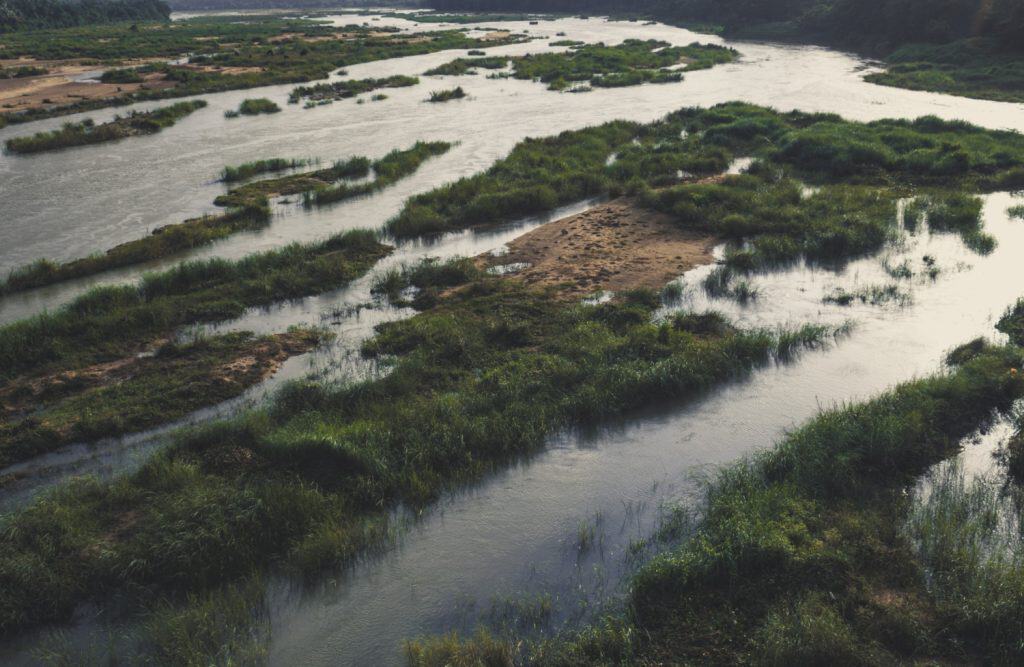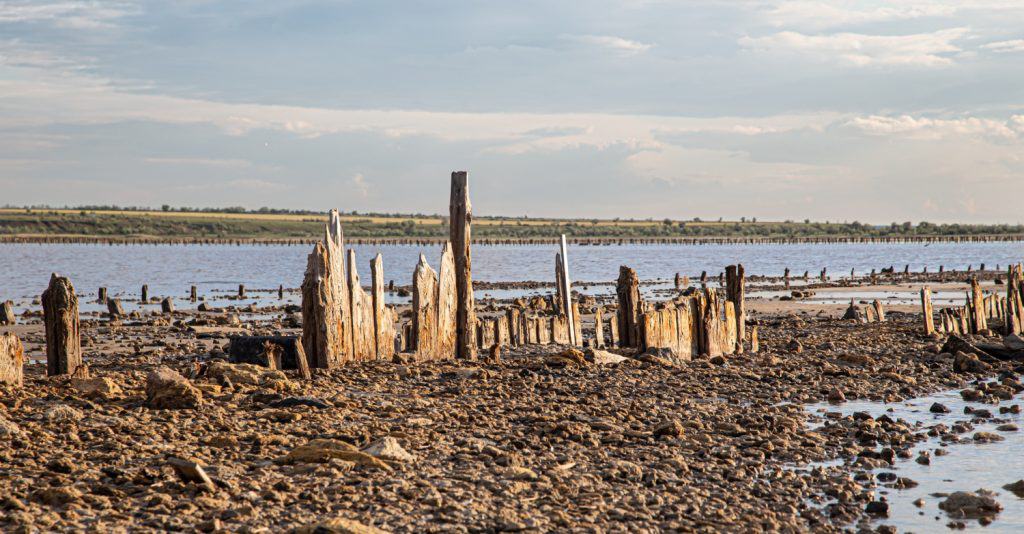
In This Article
In the intricate web of our planet’s delicate ecosystems, the occurrence of environmental disasters sends shockwaves that reverberate far beyond their origin. The Ripple Effect, in the context of environmental crises, is a phenomenon wherein the consequences extend well beyond the immediate location and time of the disaster. From devastating hurricanes and earthquakes to man-made catastrophes like oil spills and industrial accidents, understanding the intricate dynamics of the Ripple Effect is paramount in addressing the global challenges posed by environmental instability.
The Chain Reaction of Environmental Disasters

Immediate Effects on Flora and Fauna
Environmental disasters, whether natural or anthropogenic, inflict immediate harm on local ecosystems. For instance, wildfires engulfing vast expanses of forests not only obliterate flora but also displace and endanger countless species of fauna. The destruction of habitats, disruption of natural processes, and the alteration of ecosystems can lead to irreversible losses in biodiversity.
Disruption of Local Biodiversity
The intricate balance within ecosystems is disrupted when disasters strike. This disturbance often results in the decline or extinction of certain species, affecting the delicate web of interactions between organisms. The loss of biodiversity has cascading effects, influencing everything from pollination and seed dispersal to nutrient cycling, with repercussions for the stability and resilience of ecosystems.
Contamination of Water Sources
Environmental disasters frequently contaminate water sources, posing a severe threat to both aquatic and terrestrial life. Chemical spills, industrial accidents, or natural disasters like tsunamis can introduce pollutants, disrupting the quality of water and affecting the organisms that rely on it. Contaminated water sources also jeopardize human populations, leading to waterborne diseases and long-term health issues.
Soil Degradation and Agricultural Impacts for Environmental Disasters
The aftermath of environmental disasters often leaves soils depleted and vulnerable. Erosion, chemical contamination, and the loss of topsoil can hinder agricultural productivity, affecting the livelihoods of local communities. The long-term consequences may include food shortages, economic instability, and increased susceptibility to further environmental shocks.
Climate Change and Its Connection to Environmental Disasters
Environmental disasters contribute significantly to climate change, forming a feedback loop that exacerbates the frequency and severity of both. For example, the release of greenhouse gases from wildfires or industrial accidents intensifies the greenhouse effect, amplifying global warming. In turn, a warmer climate can influence the occurrence and intensity of natural disasters, creating a cyclical pattern of environmental instability.
Cross-Border Air and Water Pollution
Airborne pollutants and waterborne contaminants from environmental disasters don’t adhere to geopolitical boundaries. Smoke, ash, and pollutants released into the atmosphere during events like forest fires or industrial accidents can travel vast distances, impacting air quality and human health in regions far from the disaster site. Similarly, water pollution can traverse waterways, affecting downstream communities and ecosystems.
Economic Fallout

The economic fallout from environmental disasters is profound, transcending the immediate regions directly affected by the catastrophe. These events, whether natural or human-induced, unleash a cascade of economic consequences that permeate local economies and extend to the global stage.
Disruption of Livelihoods
Communities in the proximity of environmental disasters often bear the brunt of economic dislocation. The destruction of infrastructure, homes, and businesses disrupts daily life and leaves a lasting impact on the livelihoods of those dependent on local industries. For example, coastal communities devastated by hurricanes may face the collapse of fishing industries, leading to unemployment and economic hardship.
Infrastructure Damage and Reconstruction Costs
The aftermath of environmental disasters necessitates significant investment in rebuilding and repairing infrastructure. Governments and local authorities are faced with the daunting task of restoring roads, bridges, and utilities, diverting resources that could otherwise be allocated for development or social services. The economic strain resulting from these reconstruction efforts further compounds the challenges affected regions face.
Interruption of Global Supply Chains
Environmental disasters disrupt global supply chains, particularly in industries with complex and interconnected production processes. For instance, disruptions in manufacturing due to a natural disaster in one region can lead to shortages of critical components, affecting industries and consumers worldwide. The interconnected nature of the global economy means that a disturbance in one area can have far-reaching economic ramifications.
Shifts in Commodity Prices
The impact of environmental disasters extends to commodity markets, influencing the prices of goods and resources. Events such as droughts, floods, or wildfires can lead to fluctuations in agricultural yields, affecting food prices globally. Similarly, disruptions in the energy sector, as seen in the aftermath of events like oil spills, can lead to volatility in energy markets and impact the cost of production for various industries.
Human Health and Societal Ramifications

Environmental disasters have profound implications for human health and societal well-being. Beyond the immediate physical dangers posed by the disasters themselves, the aftermath often gives rise to long-term health issues and societal challenges.
Exposure to Toxins and Pollutants
Industrial accidents, chemical spills, and natural disasters can release harmful toxins and pollutants into the environment. Individuals in the affected areas are at risk of direct exposure to these hazardous substances, leading to acute health problems. Respiratory issues, skin conditions, and other immediate health risks can emerge as a result of contact with contaminated air, water, or soil.
Respiratory and Waterborne Diseases
Poor air quality resulting from environmental disasters can contribute to a surge in respiratory diseases. Similarly, contaminated water sources can lead to the spread of waterborne illnesses, creating public health crises in the aftermath of events like floods or industrial accidents. The lack of access to clean water and sanitation further exacerbates the vulnerability of affected populations to disease outbreaks.
Psychological Effects on Affected Communities
The trauma experienced during and after environmental disasters extends beyond physical health. Communities grappling with the loss of homes, livelihoods, and loved ones often face mental health challenges. Post-traumatic stress, anxiety, and depression can become pervasive, requiring long-term support and mental health services to help individuals and communities cope with the psychological toll of the disaster.
Increased Vulnerability to Future Disasters
The cyclical nature of environmental disasters and their impact on communities can create a cycle of vulnerability. Displaced populations, weakened by the initial disaster, may struggle to recover fully before facing new challenges. This increased vulnerability heightens the risk of further health crises and exacerbates the societal impact of subsequent disasters.
Political and Social Response

The occurrence of environmental disasters necessitates coordinated responses at both political and social levels to mitigate the immediate impact and address the long-term consequences. Understanding the interconnected nature of these crises is essential for formulating effective strategies that transcend national borders.
Role of Global Organizations (e.g., UN, WHO)
Global organizations play a pivotal role in coordinating international responses to environmental disasters. The United Nations (UN) and the World Health Organization (WHO), among others, facilitate collaboration between nations, providing frameworks for disaster management, resource allocation, and information sharing. These organizations contribute to the development of standardized protocols and guidelines to enhance the effectiveness of responses and ensure a unified approach to environmental crises.
Bilateral Agreements and Collaboration
In addition to multilateral efforts, bilateral agreements between nations are crucial for addressing the transboundary nature of environmental disasters. Sharing expertise, resources, and technologies strengthens the collective ability to respond to crises effectively. Collaborative initiatives between countries can involve joint research, technology transfer, and mutual assistance during emergencies, fostering a sense of global solidarity in the face of environmental challenges.
Grassroots Movements for Environmental Protection
Engaging local communities is integral to building resilience and promoting sustainable practices. Grassroots movements focused on environmental protection raise awareness about the consequences of human activities on the environment. These movements empower communities to advocate for responsible policies, sustainable development, and the preservation of natural resources. Grassroots initiatives contribute to a bottom-up approach, ensuring that local perspectives and needs are considered in broader disaster response and mitigation strategies.
Importance of Community Resilience
Building community resilience is a key component of effective disaster management. Communities that are educated, empowered, and connected are better equipped to withstand and recover from environmental disasters. This involves education on disaster preparedness, access to early warning systems, and the development of community-based response plans. By fostering social cohesion and preparedness at the local level, the overall societal response to environmental disasters can be more robust.
Mitigation and Preparedness Strategies
To address the increasing frequency and severity of environmental disasters, proactive measures are essential. Mitigation and preparedness strategies aim to reduce the impact of disasters, enhance resilience, and ensure a swift and coordinated response when crises occur.

Early Warning Systems for Environmental Disasters
Early warning systems play a crucial role in minimizing the impact of environmental disasters. Technological advancements, such as satellite monitoring, weather forecasting, and seismic sensors, enable the timely detection of potential disasters. Integrated systems that provide real-time information and alerts to at-risk populations allow for effective evacuation and preparation, reducing the loss of lives and property.
Sustainable Development Practices
Adopting sustainable development practices is fundamental to mitigating the impact of environmental disasters. Responsible land use planning, conservation of natural habitats, and the promotion of eco-friendly technologies contribute to building resilience in the face of climate-related events. Sustainable practices also involve transitioning to renewable energy sources, reducing carbon emissions, and implementing measures to adapt to changing environmental conditions.
Technological Advancements in Disaster Response
Advancements in technology offer innovative solutions for disaster response and recovery. Drones, artificial intelligence, and data analytics can be utilized for rapid damage assessment, resource allocation, and decision-making during and after disasters. Remote sensing technologies aid in monitoring environmental changes, enabling proactive measures to mitigate the impact of events such as wildfires, hurricanes, and floods.
Conclusion
In the wake of environmental disasters, the ripple effects are far-reaching, transcending geographical boundaries and impacting ecosystems, economies, and societies. This interconnected web necessitates a united response, blending international cooperation with grassroots movements and proactive mitigation strategies. As we confront the challenges of an unpredictable environment, the call to action is clear: foster resilience, embrace sustainable practices and unite in a global commitment to safeguard our planet for future generations. The ripple effect is a reminder that our collective actions today shape the trajectory of a more sustainable and resilient tomorrow.



